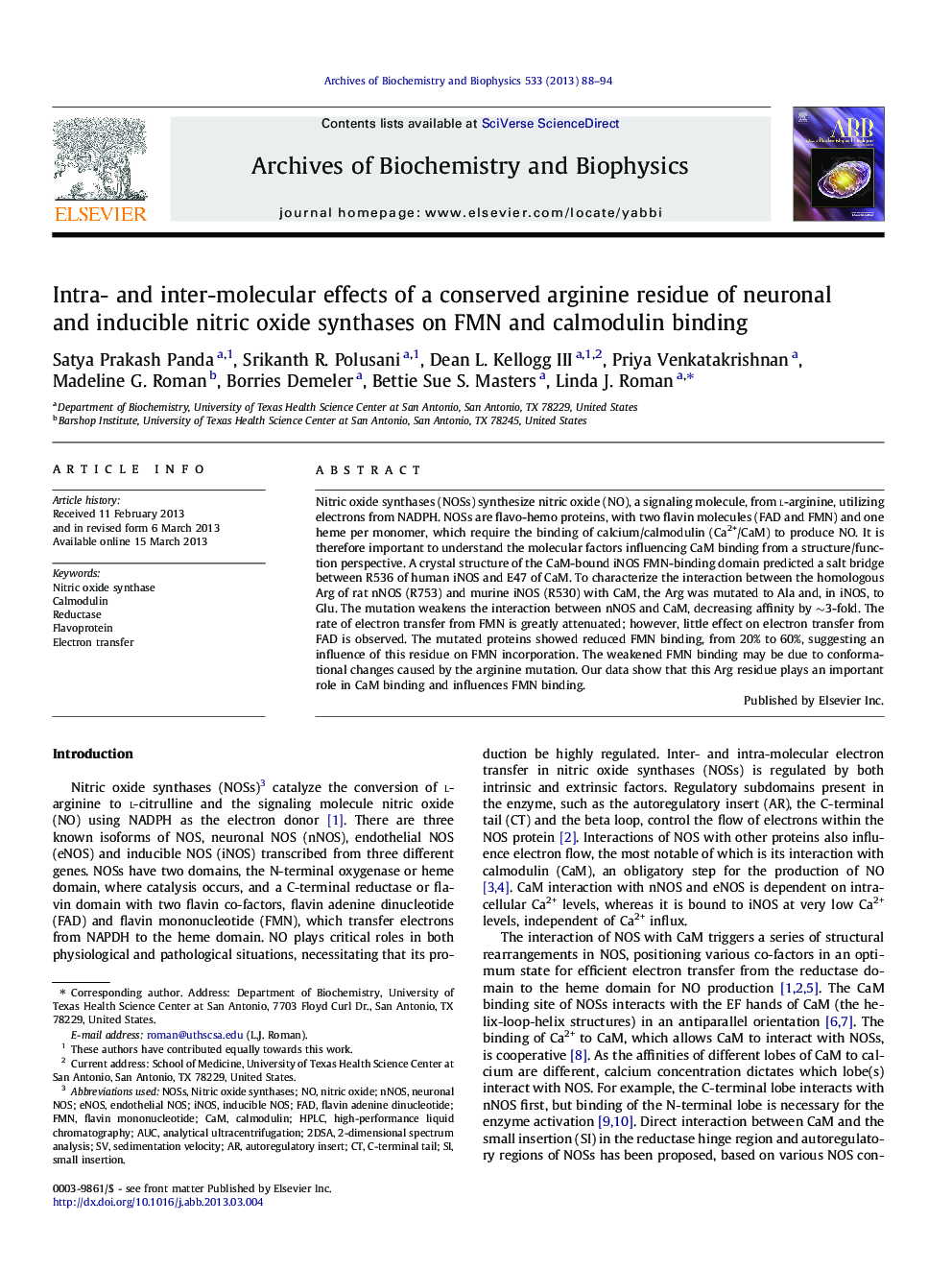| Article ID | Journal | Published Year | Pages | File Type |
|---|---|---|---|---|
| 1925362 | Archives of Biochemistry and Biophysics | 2013 | 7 Pages |
Abstract
Nitric oxide synthases (NOSs) synthesize nitric oxide (NO), a signaling molecule, from l-arginine, utilizing electrons from NADPH. NOSs are flavo-hemo proteins, with two flavin molecules (FAD and FMN) and one heme per monomer, which require the binding of calcium/calmodulin (Ca2+/CaM) to produce NO. It is therefore important to understand the molecular factors influencing CaM binding from a structure/function perspective. A crystal structure of the CaM-bound iNOS FMN-binding domain predicted a salt bridge between R536 of human iNOS and E47 of CaM. To characterize the interaction between the homologous Arg of rat nNOS (R753) and murine iNOS (R530) with CaM, the Arg was mutated to Ala and, in iNOS, to Glu. The mutation weakens the interaction between nNOS and CaM, decreasing affinity by â¼3-fold. The rate of electron transfer from FMN is greatly attenuated; however, little effect on electron transfer from FAD is observed. The mutated proteins showed reduced FMN binding, from 20% to 60%, suggesting an influence of this residue on FMN incorporation. The weakened FMN binding may be due to conformational changes caused by the arginine mutation. Our data show that this Arg residue plays an important role in CaM binding and influences FMN binding.
Related Topics
Life Sciences
Biochemistry, Genetics and Molecular Biology
Biochemistry
Authors
Satya Prakash Panda, Srikanth R. Polusani, Dean L. III, Priya Venkatakrishnan, Madeline G. Roman, Borries Demeler, Bettie Sue S. Masters, Linda J. Roman,
